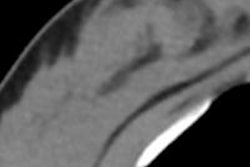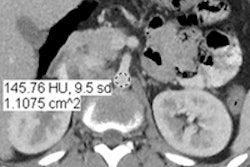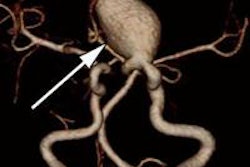Dear AuntMinnie Member,
Clerkships are a great way to expose medical students to radiology through short minicourses that broadly cover the important issues in medical imaging. Educators from Harvard Medical School have fine-tuned their radiology clerkships by structuring them into smaller groups and offering them earlier in every medical student's third year.
While most medical schools offer clerkships as an elective, Harvard makes the programs compulsory for its medical students. The university has also pushed clerkships up to the beginning of the third year of a medical student's education, earlier than most other schools, according to an article in our Residents Digital Community. The earlier start means fewer conflicts with other educational demands.
What's more, Harvard has adopted a small-group focus for its clerkships, rather than large plenary lectures. The result has been steadily rising scores on an exam covering clinical knowledge that is given to medical students in their fourth year.
Learn more about how Harvard has structured its radiology clerkship program by clicking here, or visit our Residents Digital Community at residents.auntminnie.com.
CT for breast density
Until now, most discussion of breast density measurement has focused on using data from mammography studies to determine a patient's tissue density. But what if we used CT instead?
It might sound like a crazy idea at first blush, since CT isn't commonly used as a breast imaging modality. But U.S. researchers believe that the density measurements could be derived from CT scans acquired for clinical applications other than breast imaging, such as a chest CT scan.
The idea is that many women referred for CT studies haven't received regular mammography exams. Producing breast density measurements from these studies could give these women and their physicians some insight into their risk of breast cancer, as tissue density is a known risk factor.
Learn more by clicking here, or visit our Women's Imaging Digital Community at women.auntminnie.com.
DR combo sees nodules better
What if you took two advanced digital radiography (DR) technologies -- tomosynthesis and energy subtraction -- and combined them into a single study to see how well they detected lung nodules? Japanese researchers did just that, and we report on their results in our Digital X-Ray Community.
Tomosynthesis for the past several years has been demonstrating its prowess for seeing around structures such as the ribs that can obscure pathology including lung lesions. Energy subtraction is another tool for achieving the same result, acquiring images at two different x-ray energy levels and producing images with no bones to overlap tissue structures.
The Japanese group found that the tomosynthesis/energy subtraction images had sharply higher sensitivity and accuracy than conventional DR in detecting pulmonary nodules. Learn more about the results by clicking here, or visit the community at xray.auntminnie.com.




















